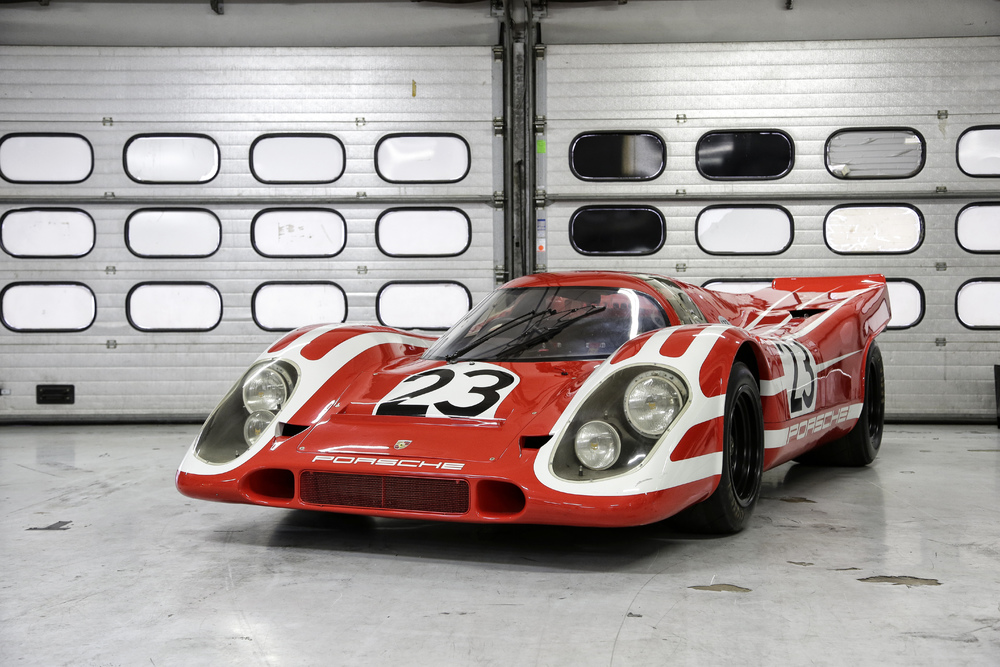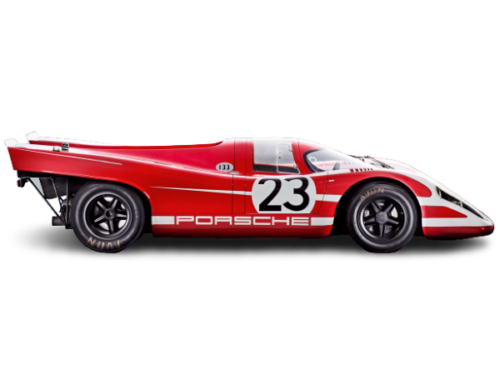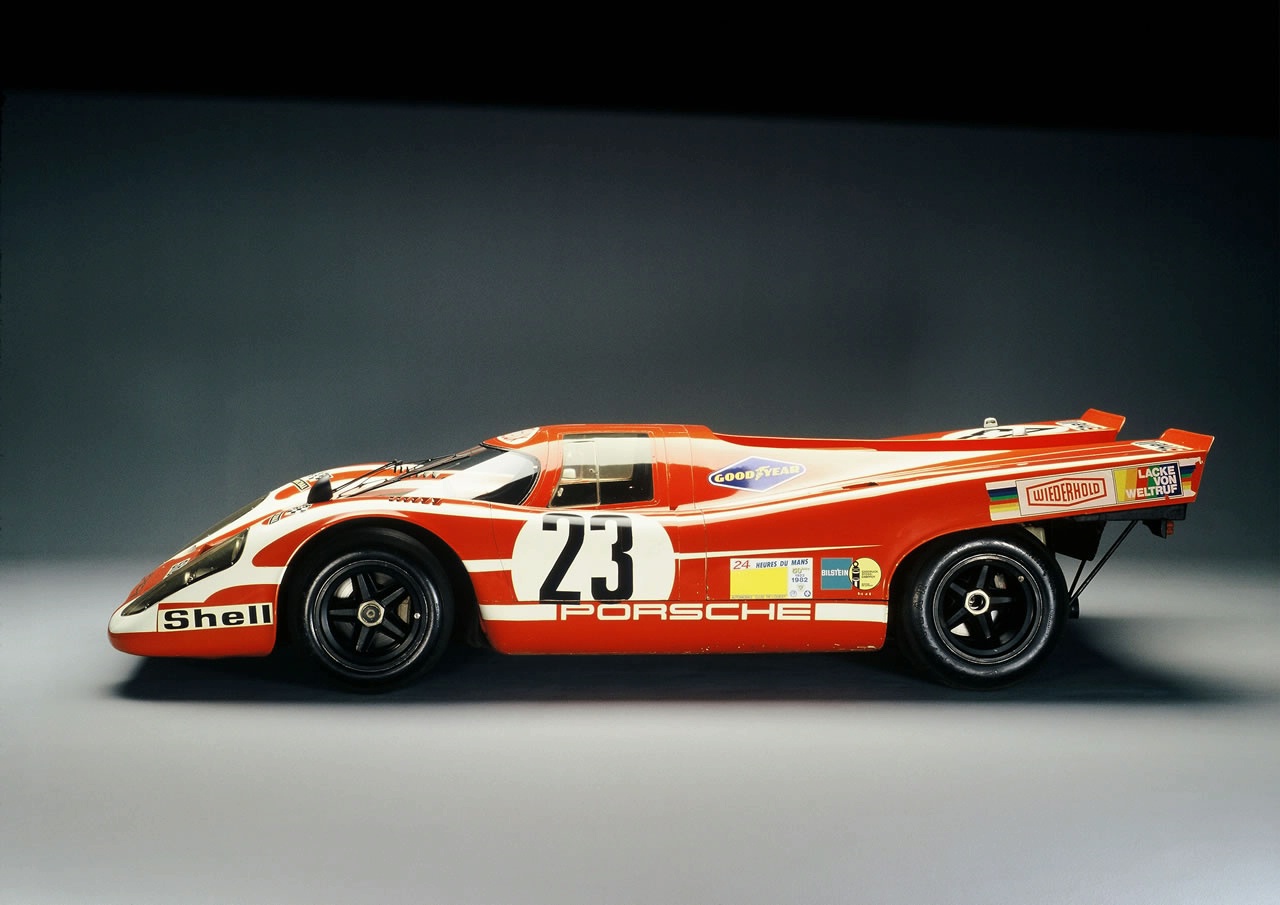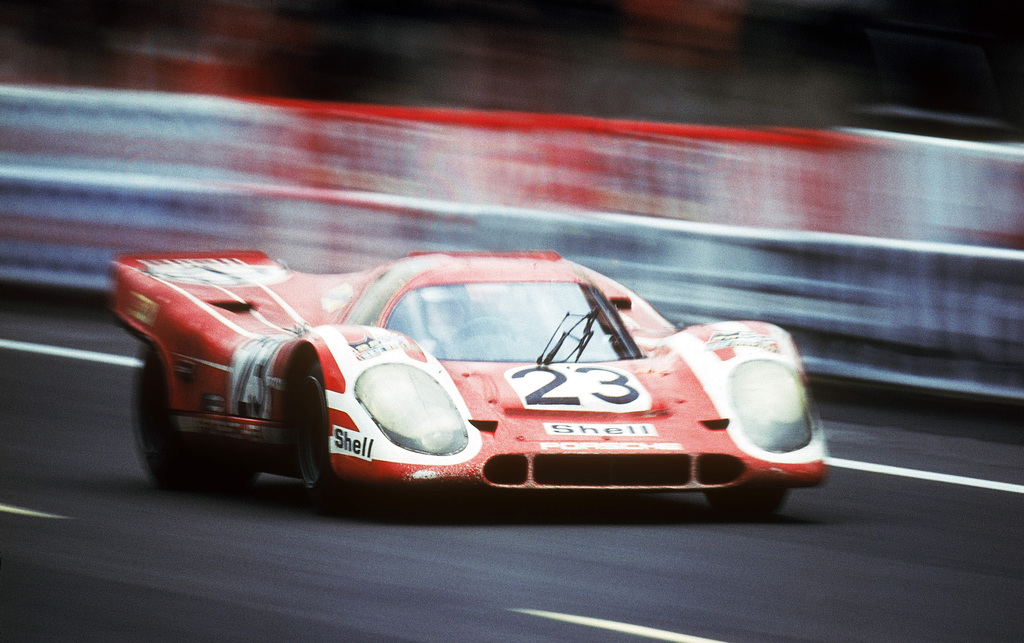Porsche 917 K (1970)
1970 Porsche 917 “Kurzheck” (Short Tail)
Also Known As: Porsche 917 KH Coupé or Porsche 917 K-70 / Premiere: 1970 January 10 at qualification for Buenos Aires 1000 km / Achievements: Le Mans winner 1970, Interserie winner 1970, Manufacturers’ World Championship for Porsche in 1970
The 917 Kurzheck Coupé (917K) first appeared in 1970 and contributed more to the Porsche 917 story than any other variant. It was a high-down force version that featured a cut-off tail for increased downforce. This reduced the cars top speed, as much as 30 mph, but it helped the Porsche win Le Mans two years in a row.
For the 1970 season, 917s were sold to Martini Racing, JWA Gulf Racing and Porsche Salzburg—all private teams that would be supported by the factory. Under the direction of John Wyer, the engineers at JWA tackled the handling problems first discovered in testing. Wyer’s engineer, John Horsmann, came up with a solution to hack off the rear section of the bodywork and replace it with a new aluminum section. This greatly improved stability by increasing downforce at the expense of drag. Porsche later made revised tail sections for most of the cars and called the cars Kurzheck or 917K. Surprisingly, another low-drag version was designed by Robert Choulet . Known as the Langheck, it was specifically intended for to achieve remarkable top speeds down the Mulsane Straight.
Porsche also experimented with the boring out the engine to a new 4.9 liter configuration which produced 20 additional horsepower. Later, it was found that these engines put too much strain on the gearbox.
For the 1970 season, Porsche faced Ferrari’s own 512S which was underpowered and overweight by comparison. Even though Ferrari brought out eleven cars, Porsche success through quazi-works teams was practically guaranteed. Only an hour and half into the race, the Ferraris were trailing. Through heavy rain and storms two 917s finished ahead of a 3.0-liter 908. Hans Herrmann and Richard Attwood drove their Salzburg red and white 917K to Porsche’s first overall victory at LeMans.
Engines
| Engine | Power (bhp) | Power (kW) | Torque (ft lbs) | Torque (Nm) |
| 4.5 L Flat 12 | 574 bhp | 428 kW | 375 ft lbs | 510 Nm |
| 4.9 L Flat 12 | 591 bhp | 441 kW | 404 ft lbs | 550 Nm |
| 5.0 L Flat 12 | 614 bhp | 458 kW | 419 ft lbs | 570 Nm |
Porsche 917 KH Coupé (In Porsche’s Own Words)
There’s no shortage of prominent number combinations at Porsche, but the sequence 9-1-7, at least when it comes to racing, is the most famous of all. It stands not only for the most powerful and fastest Porsche race car to date, but also for an entire generation of racing cars that only changes to the rules—not competitors on the track—could stop. When the new rules for the International Championship for Sports Cars were made public at the end of 1967, the team in Stuttgart-Zuffenhausen decided to build a new race car for the under-five-liter class.
As the successor to the successful 907 and 908 types, the 917 got an air-cooled twelve-cylinder engine whose power in 1970 was an imposing 580 hp (426 kW) at 8,300 rpms. On June 14, 1970, Porsche bagged the first of 16 overall victories at the 24 Hours of Le Mans. After exactly 2,863.15 miles, or 343 laps, drivers Hans Herrmann and Richard Attwood took the checkered flag in the legendary Porsche 917 Kurzheck (KH) from Porsche Salzburg, with start number 23. When Gérard Larrousse and Willy Kauhsen took second in the Martini-917 Langheck and Rudi Lins and Helmut Marko came in third in the Porsche 908/02, the Porsche sweep of the podium was perfect.
The Racing History Story
While the 1969 917 K was unstable and very difficult to drive, the rear end was completely redesigned for 1970, to finally generate downforce instead of unintended lift. The 1970 car was sorted and ready to take on the competitors. The cars built in 1969 were converted to 1970 specs.

The first major victory arrived right in the beginning of the season – the Daytona 24 hour race saw a 917 K 1-2 finish by team John Wyer Engineering. The 917 K-70 of the J. W. Automotive Engineering team + Leo Kinnunen & Pedro Rodriguez proved to be the winning formula. They took already the third major win in the season – after Daytona 24H and Brands Hatch 1000 km, also the Monza 1000 km. Another evolution to the 917 is seen at the Monza 1000 km – the 4.9-litre engine.
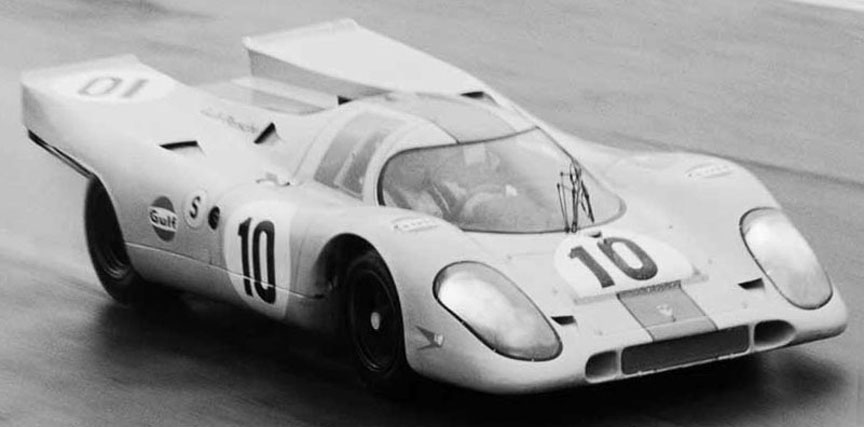
The added power and torque of the 4.9-litre engine compared to the final version of the 4.5-litre wasn’t significant, but of course any increase in performance is beneficial in the races where rivals’ cars are not failing for technical reasons or because of accidents. The first victory for the 4.9-litre 917 comes at the Spa 1000 km race.
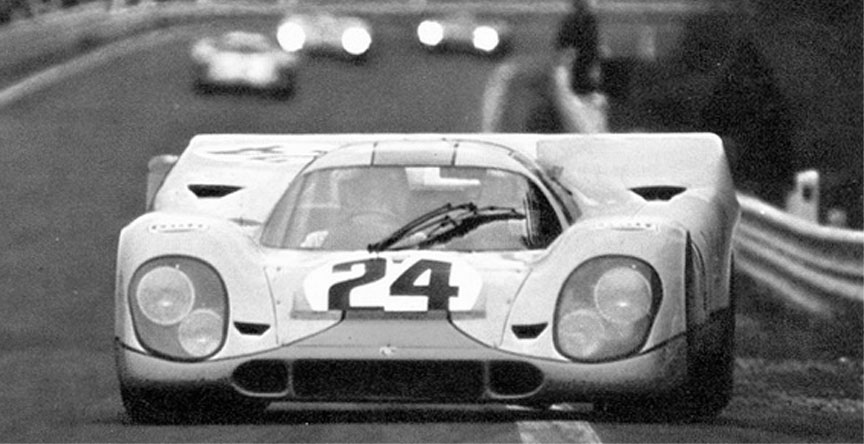

By 1970 Porsches were so famous racing cars that majority of privateers used Porsches. This meant that the starting grid of the 1970 Le Mans 24H saw 24 Porsches and 27 other cars. What can be better for marketing – now everybody wanted a Porsche.
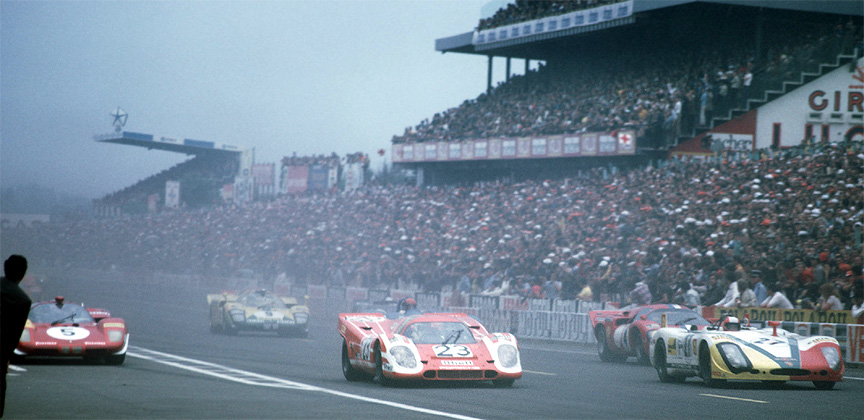
One and half hours to the race it started raining. Soon after there was an incident with four Ferrari 512 – three of them involved in a crash which eliminated them and the engine in the fourth was ruined with unintended over-revving during the close escape maneuver. At that point already seven of top ten qualifiers were out of the race. The rain got heavier and Jacky Ickx was driving the last surviving factory entered Ferrari in the night from 6th place to the second when he crashed, killing a marschal as a consequence. By dawn the weather turned from rain to storm. Despite the “Le Mans-special” longtail 917 LH-70 4.9 of Vic Elford/Kurt Ahrens Jr. was the fastest in qualification and started from the pole position, in the morning they had to retire due to engine failure. The race was won by Porsche Salzburg entered 917 K-70 4.5 (chassis 917-023) #23 driven by Richard Attwood/Hans Hermann. They were followed by two cars from Martini Racing, the second place went to 917 LH-70 4.5 #3 of Gérard Larrousse/Willy Kauhsen and third to 908/02 LH Flunder Spyder. The 1970 Le Mans race saw the first overall victory for Porsche and also the 1-2-3 Porsche victory.
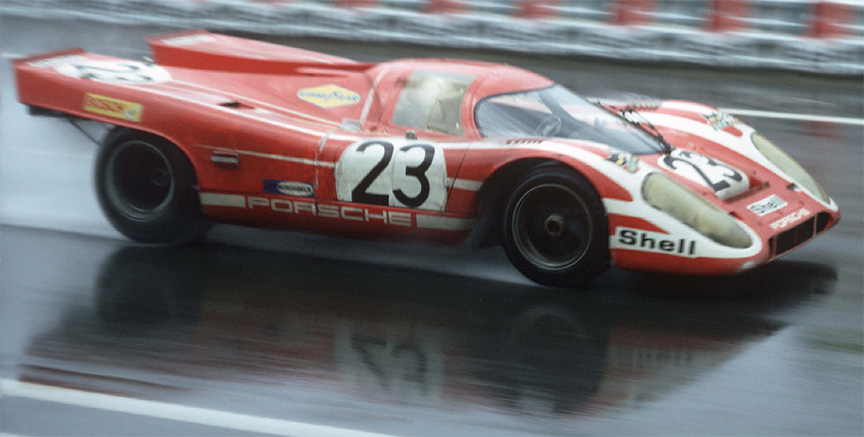
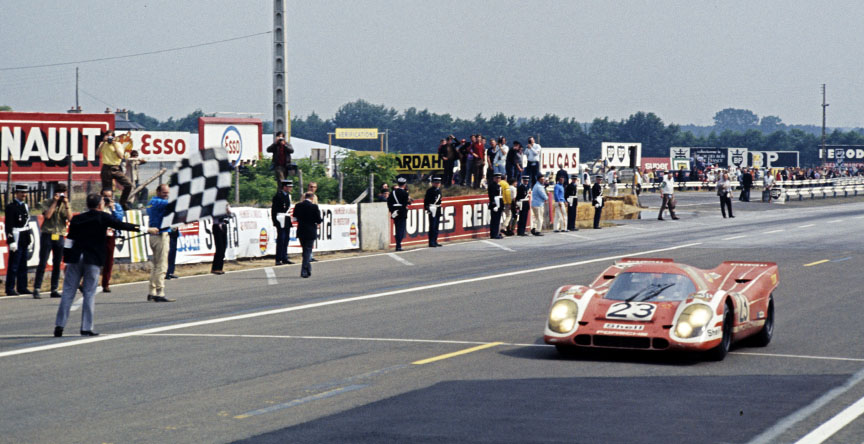
Because of the awful weather conditions only 16 cars finished. As many of them were too many laps behind, only seven cars were finally classified. Porsche had won all the four classes that had finishers: 5-litre sports car class with the 917, 3-litre prototype class with the 908, 2-litre GT class with the 914 and finally the 2.5-litre GT class with the 911 S/T 2.3. The 914 was 6th and the 911 7th overall.
The 1970 Le Mans proved again – in a long distance race the main factor is the durability of the car, not only its speed. Although the long tail 917 was quicker at the very fast Le Mans track and the 4.9-litre engine more powerful, the race was won by the more durable 4.5-litre and the less aerodynamic short tail body. None of the 4.9-litre engines survived the 24 hours. The winning 917-023 had started the season with the 4.5-litre engine, then used the 4.9-litre for two 1000 km races and was equipped again with the 4.5-litre for the Le Mans.
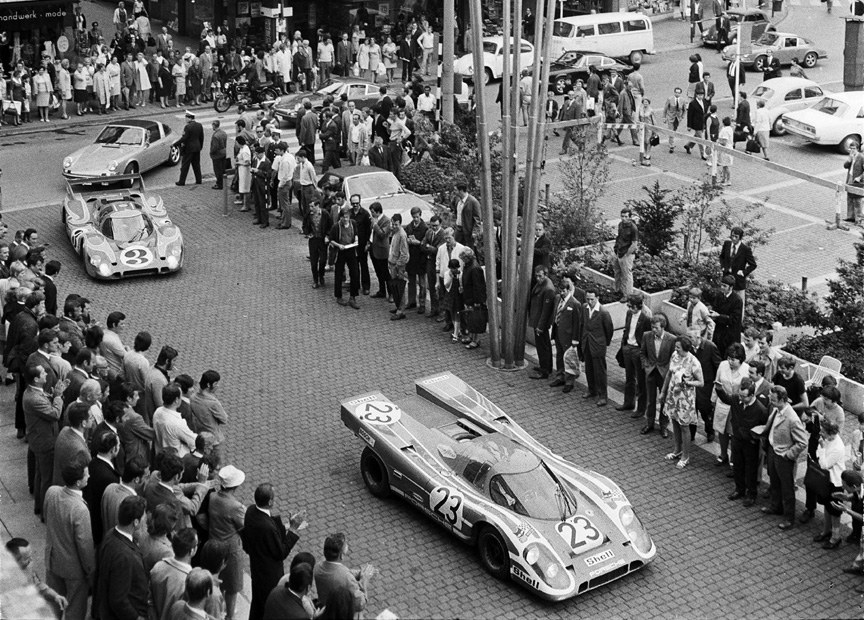
Pedro Rodriguez/Leo Kinnunen won the 1970 Watkins Glen 6 hour race on July 11. A day later, the 5.0-litre engine is first seen racing at Can-Am Watkins Glen race. The engine has approx. 458 kW and makes the power leap from 4.9 to 5.0 as strong as it was from 4.5 to 4.9. The first victory for the 5-litre 917 comes at Zeltweg 1000 km race in Austria in October driven by Jo Siffert/Brian Redman. Interestingly, the 917 with chassis number 023, that had won the Le Mans a few months ago, is also equipped with the 5-litre engine and entered under #21 for the Zeltweg 1000 km race. It scores 4th. The fact that the car was not put in the storage after Le Mans victory, but was instead raced again and soon even sold, was the reason of many factors: in 1970 the Le Mans race was not yet as important as it would be years later, there was no Porsche Museum, and the racing department needed to cash in as it had spent vast amounts of money under the direction of “no compromises” engineering genius Ferdinand Piëch.
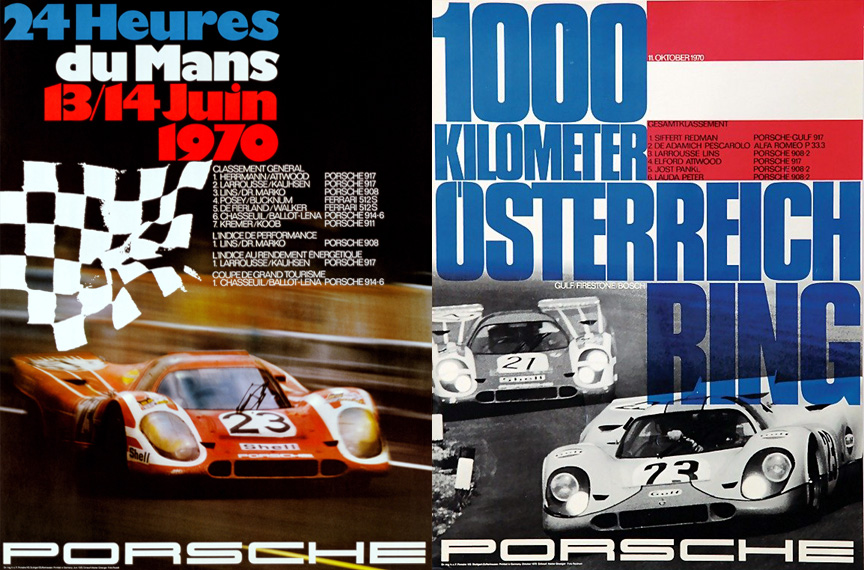
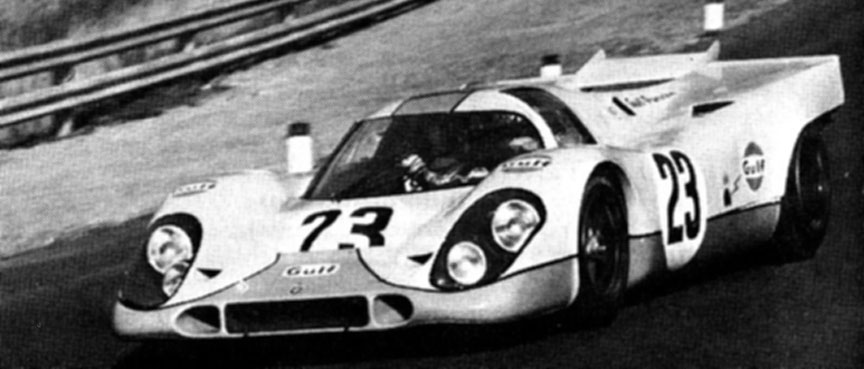
The 1970 Interserie was won by Jürgen Neuhaus with the 917 K-70 chassis 007. In the Interserie the races were up to 300 miles long and all races took place in Europe, so it was much cheaper series than the Manufacturers’ World Championship which took place all over the world and where the shortest race was the Targa Florio with its around 500 mile / 800 km distance. The 1970 MWC consisted of the following races: Daytona 24H, Sebring 12H, Brands Hatch 1000km, Monza 1000km, Targa Florio, Spa 1000km, Nürburgring 1000 km, Le Mans 24H, Watkins Glen 6H and Zeltweg 1000km. Porsche became the Manufacturers’ World Champion already in 1969, and again in 1970, now thanks to the 917.
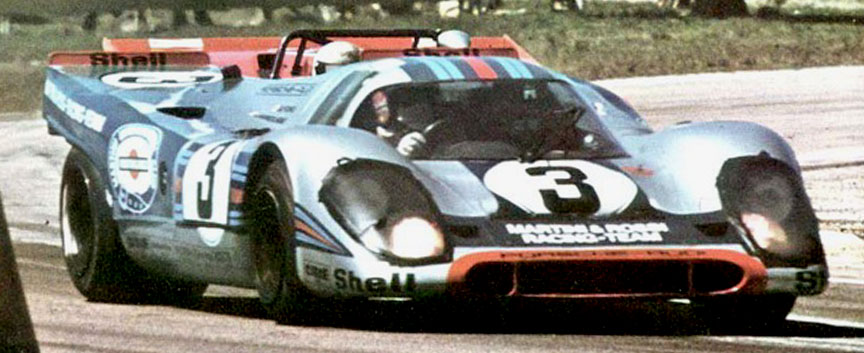
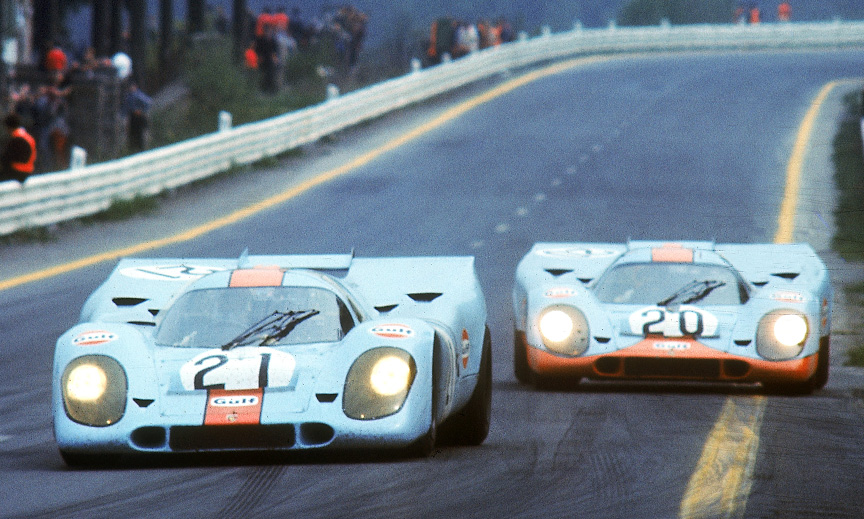
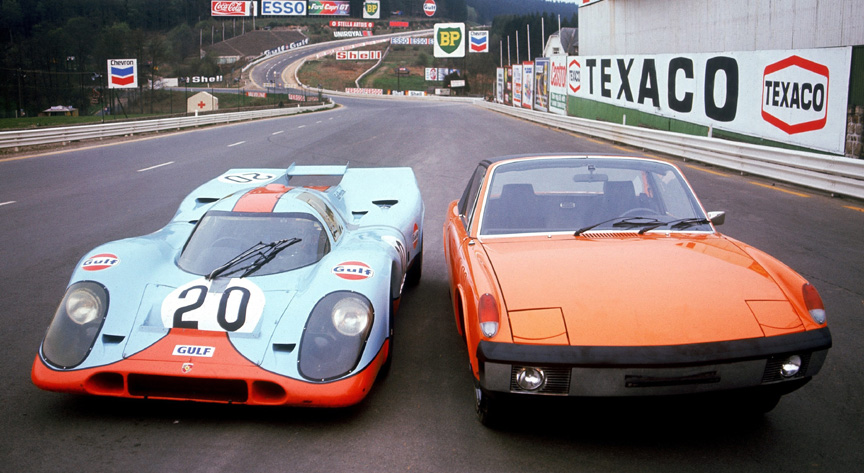
Although the factory team cars receive new body with rear fins for the 1971 season, many private cars were campaigned in their 1970 trim also in 1971. On October 17, 1971, a non-championship Paris 1000 km race was won by 917 K-70 5.0 of J. W. Automotive driven by Derek Bell/Gijs van Lennep.
Porsche racing driver Jo Siffert joined the Formula 1 championship with BRM in 1971. The last championship race was on October 3 and he scored 5th in the season. After the season he joined a non-championship F1 race on October 24 and lost his life in the fire following a crash. In the funeral, the hearse was led by a Porsche 917 K-70. Siffert would have appreciated this.
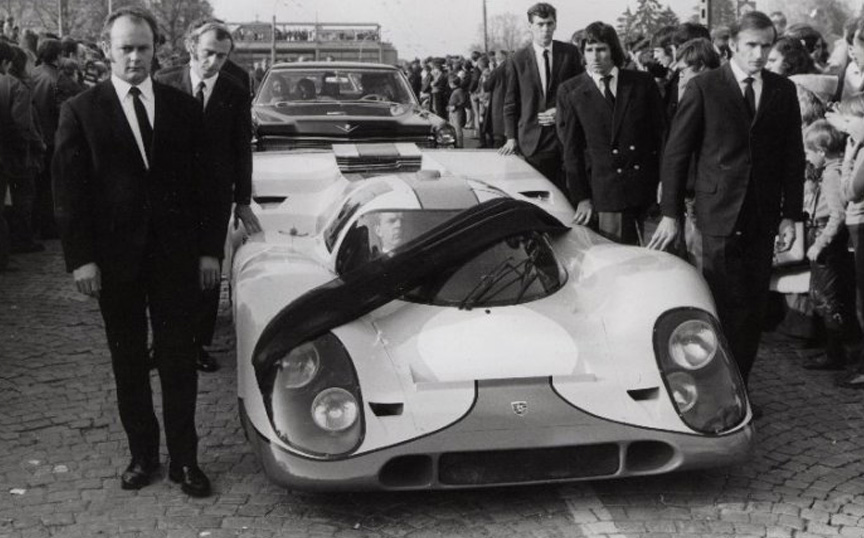
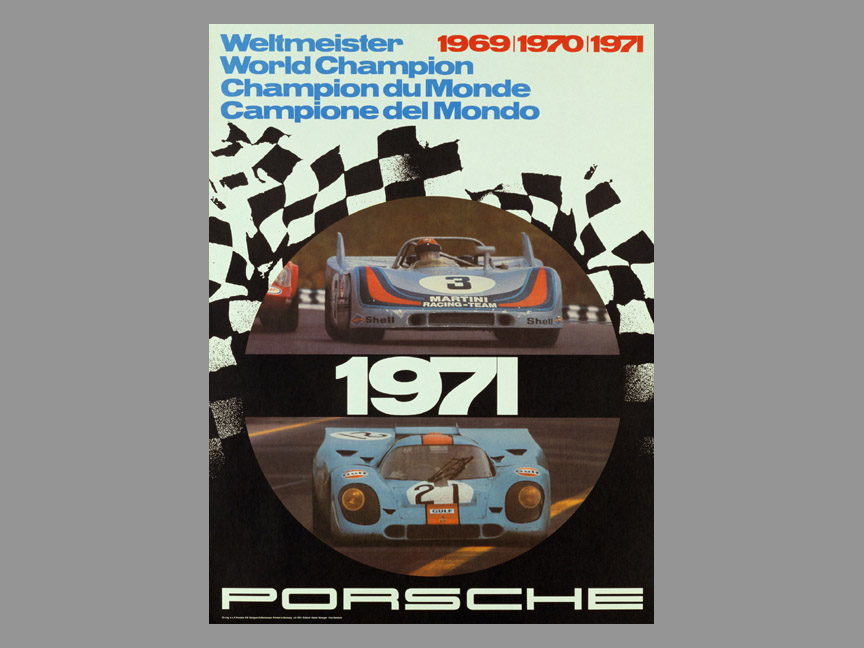
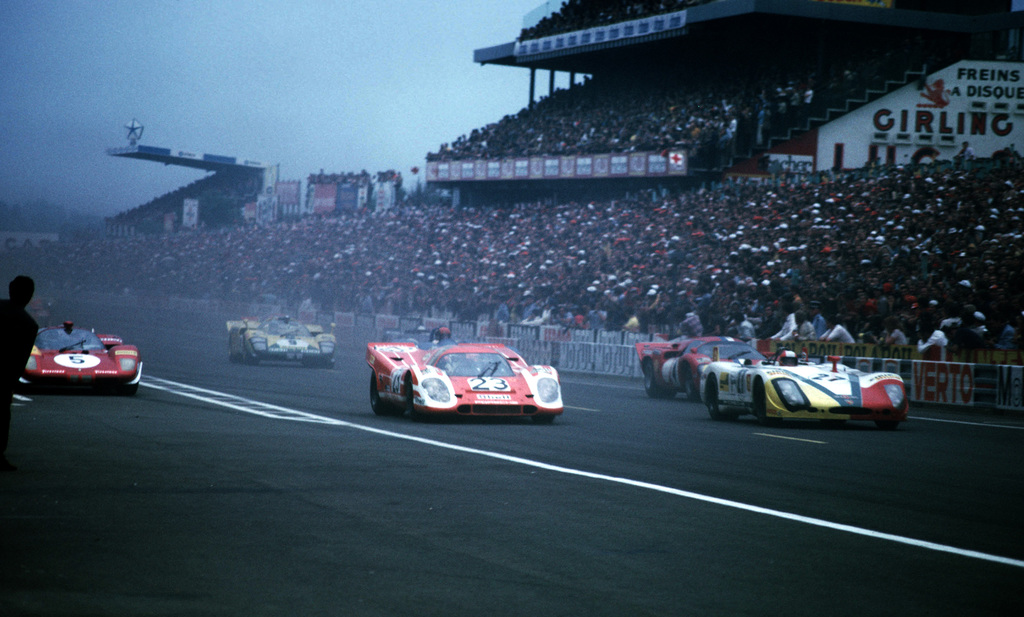
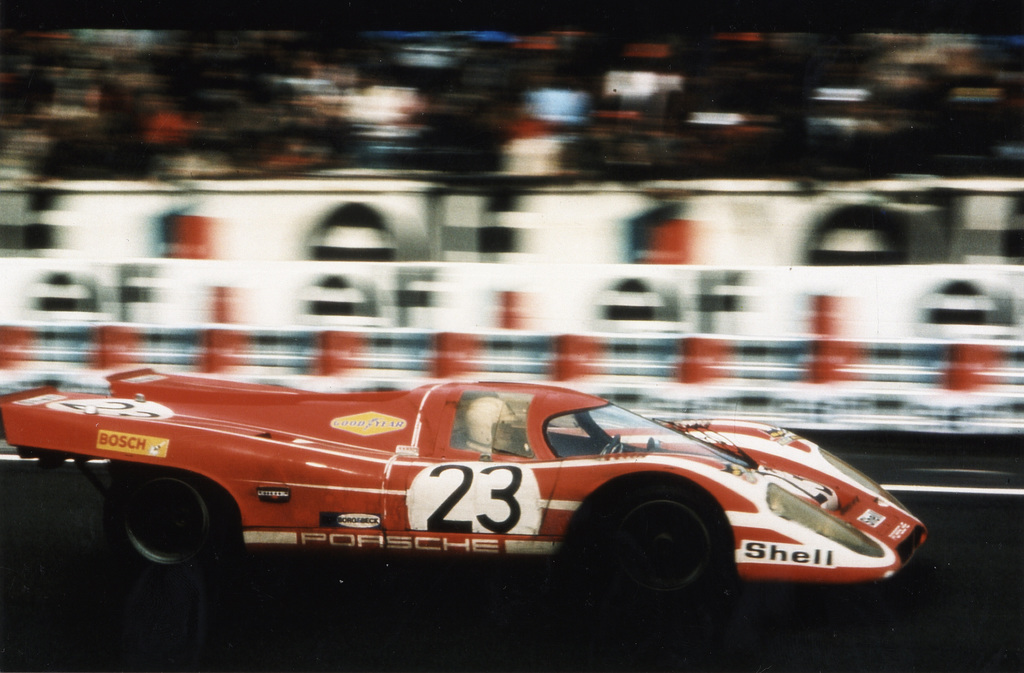
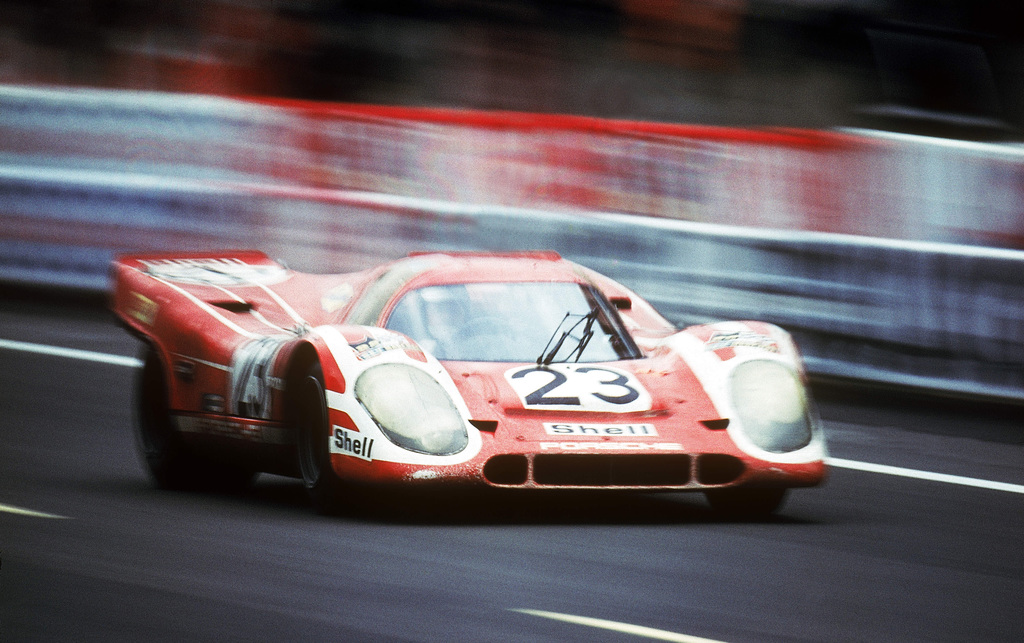
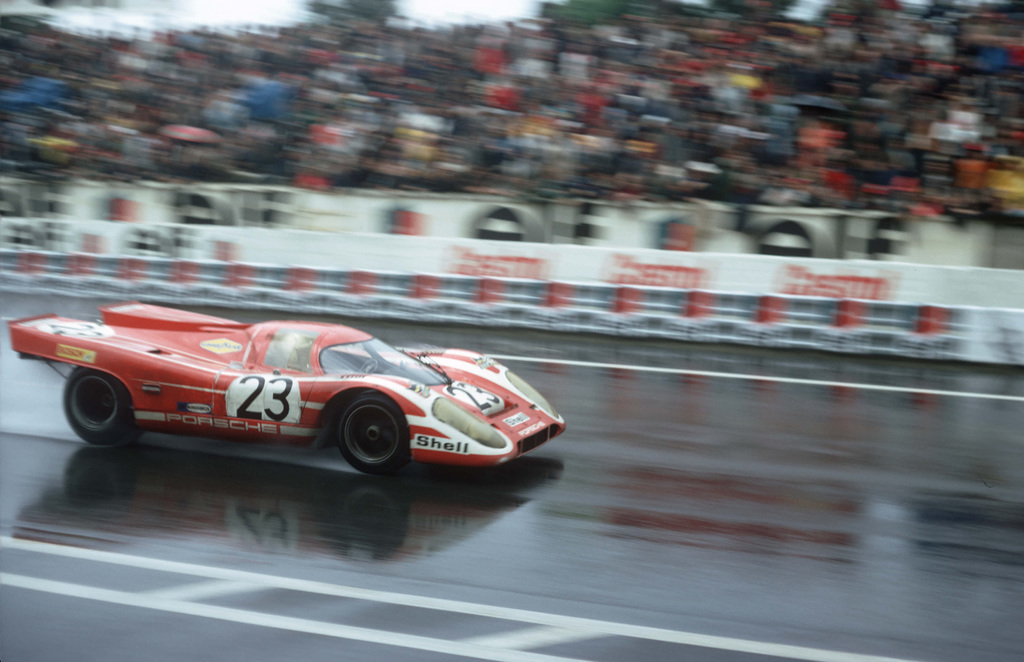
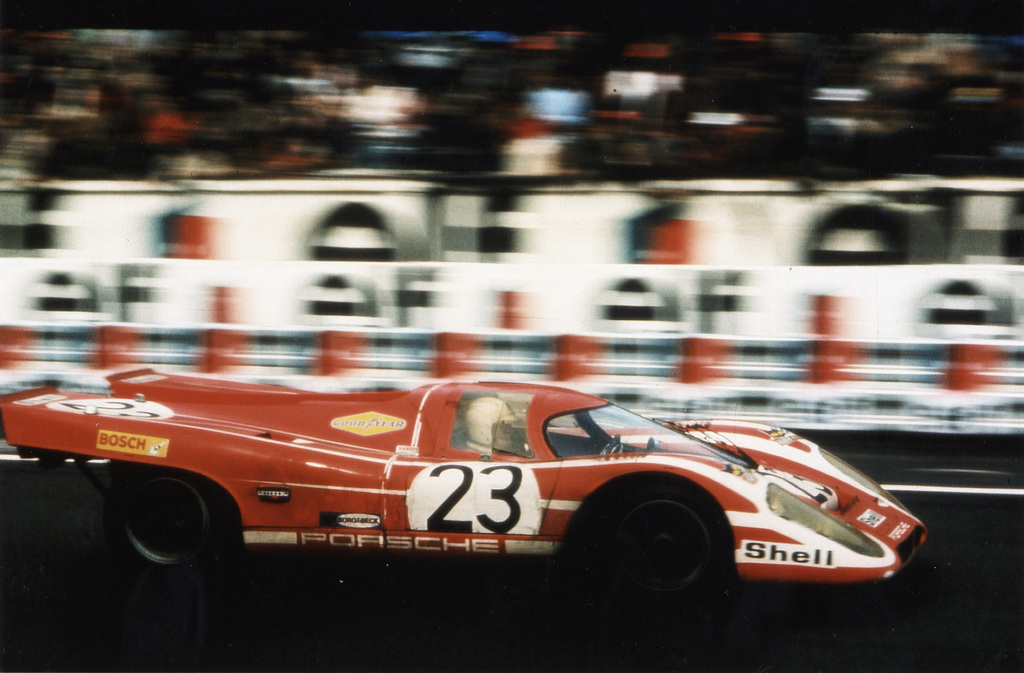
Street Legal 917
Two 917 were converted for street use in the seventies, the 917-021 and 030. The white Martini Racing 917 K-71 (917-030) that crashed at the 1971 Zeltweg 1000 km, was years later fitted with the K-70 rear end, street car equipment and painted silver for Gregorio Rossi di Montelera of Martini & Rossi. The 917-021 was extensively raced and crashed. It was restored by Joachim Grossmann into street legal car and painted white. It later changed hands a few times and was converted back to racing trim. So, the 917-030 is the only street legal 917.
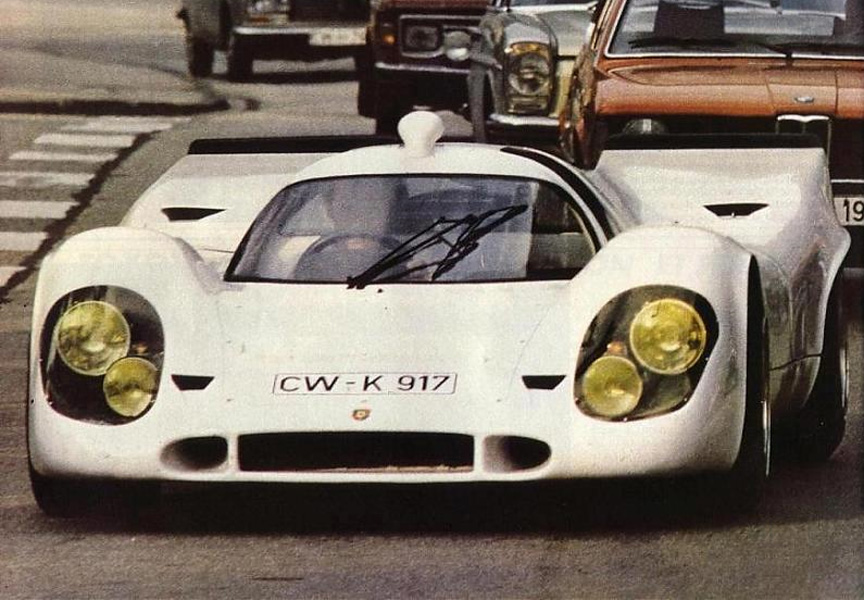
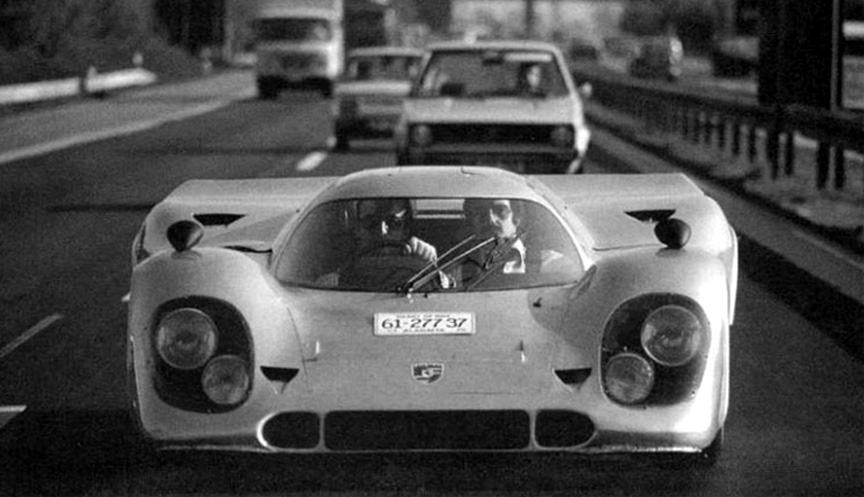
Official Clone of the Le Mans Winner (chassis 917-001)
The 1970 Le Mans-winning 917, chassis 917-023, was sold after the 1970 season to Martini Racing, was painted silver and covered with Martini stripes. From Martini Racing the car went on to private collection and has changed hands a few times. The 917-023 has been restored back to the 1970 Le Mans trim. The car that Porsche displayed over the decades, was an official clone that Porsche made from never-raced prototype chassis 917-001. In 2018-2019, the 917-001 was converted back to its original longtail body and original 1969 Geneva motor show livery.
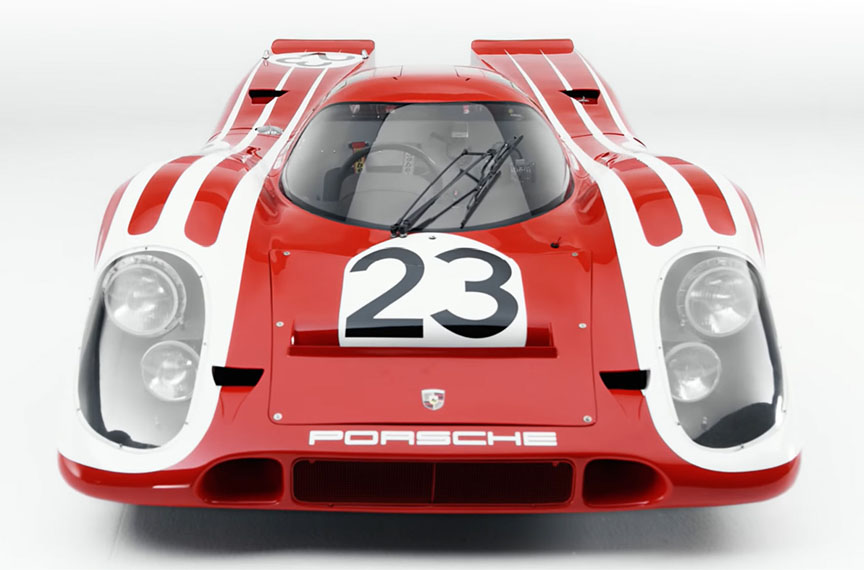
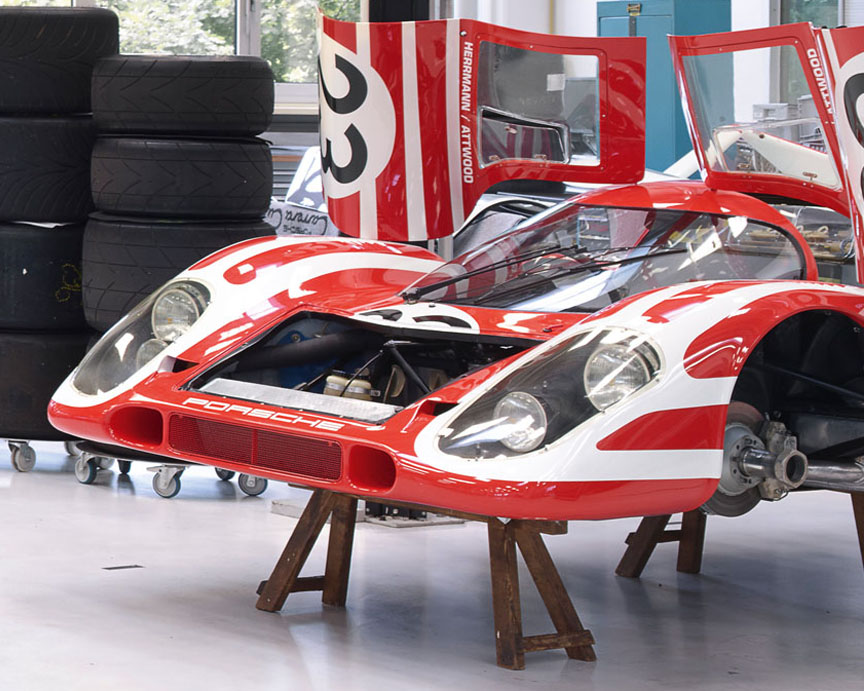
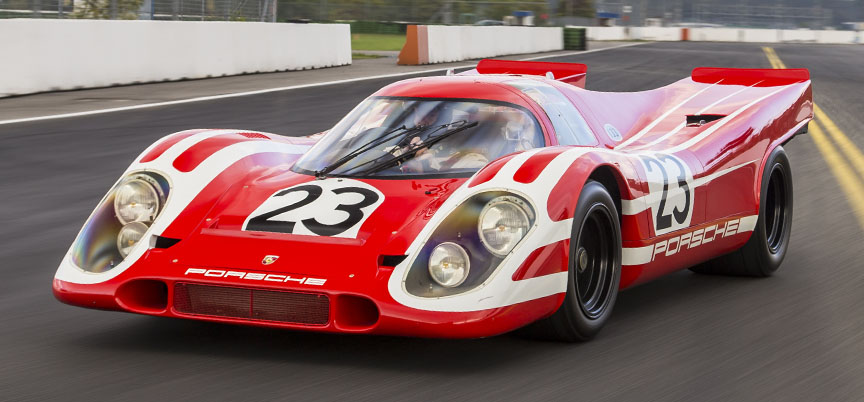
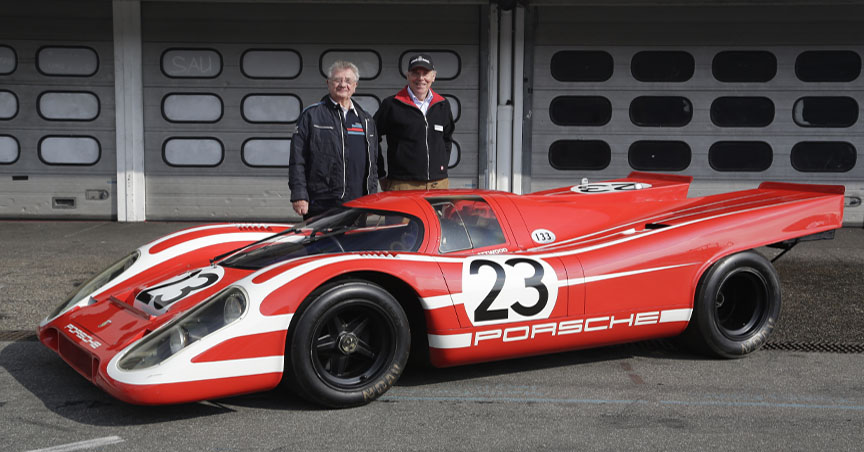
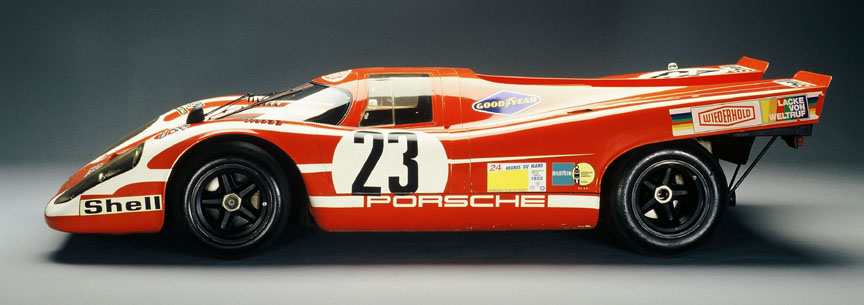
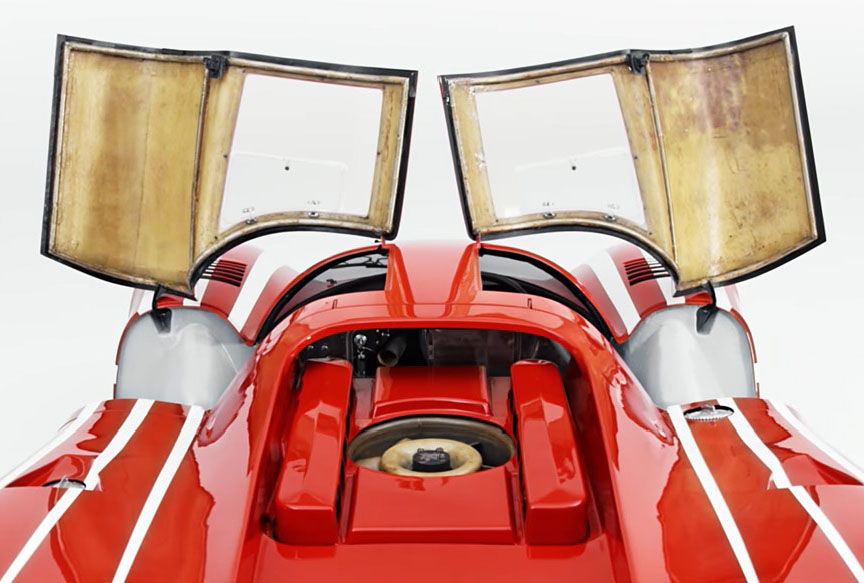
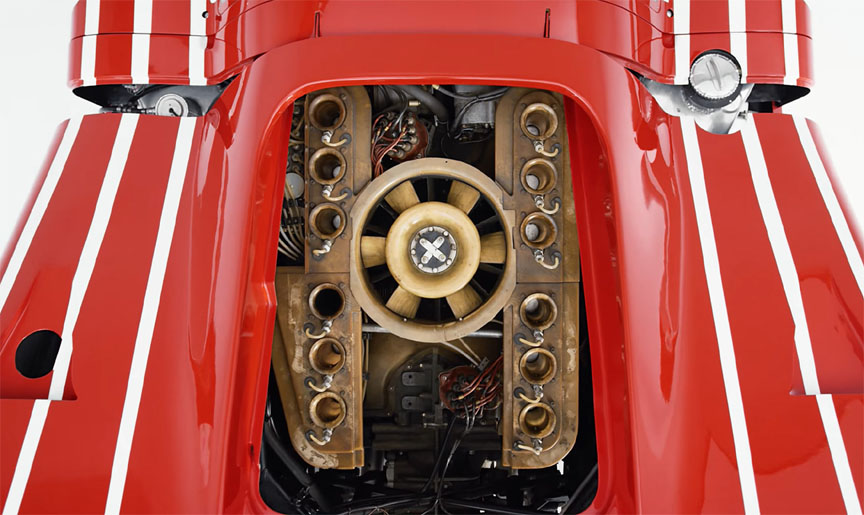
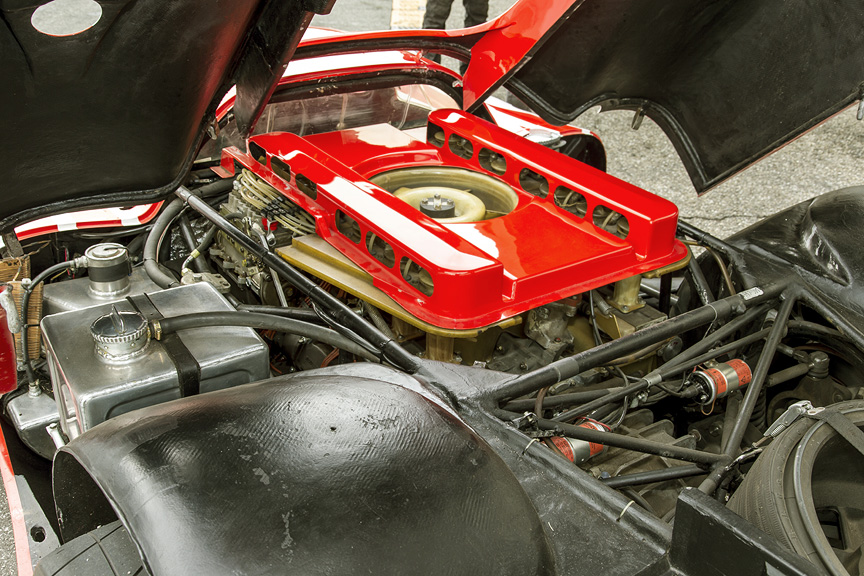
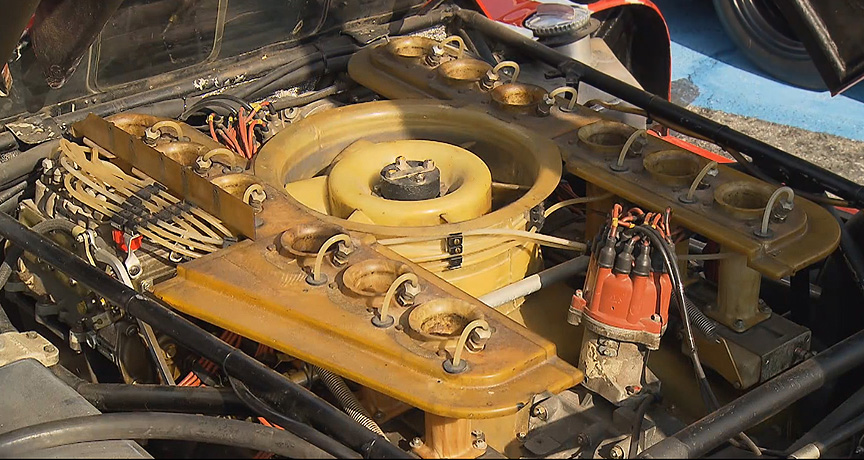
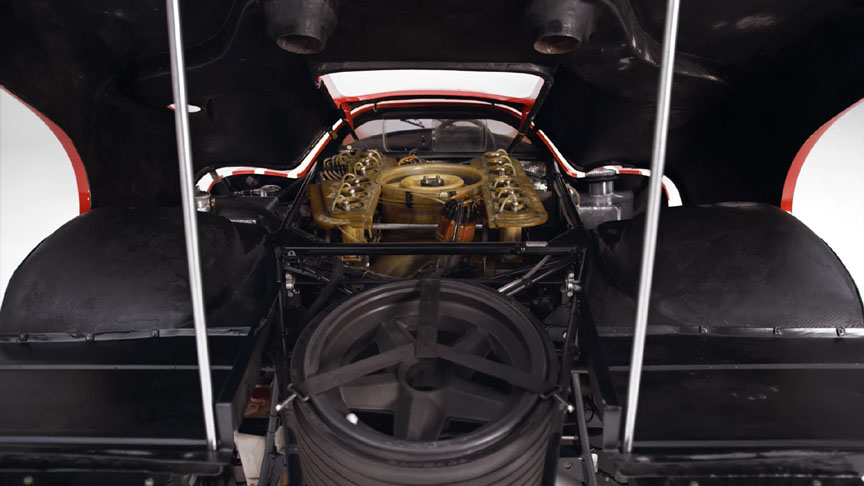
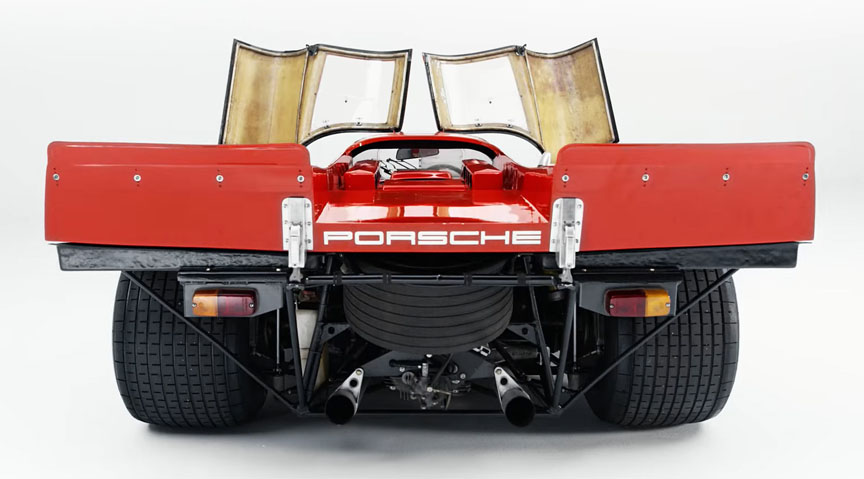
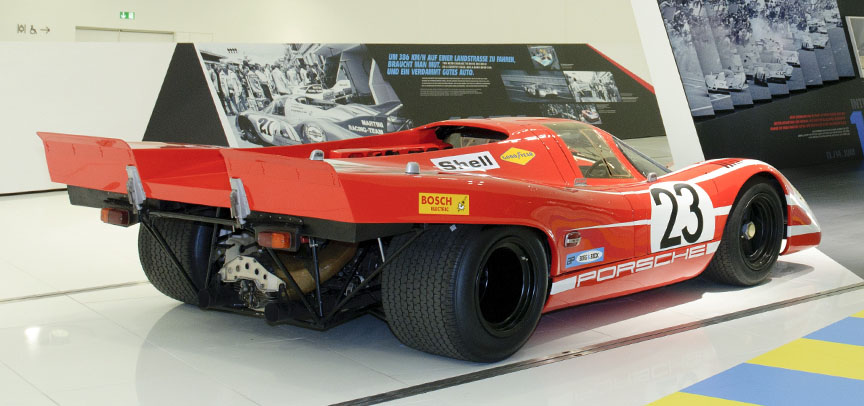
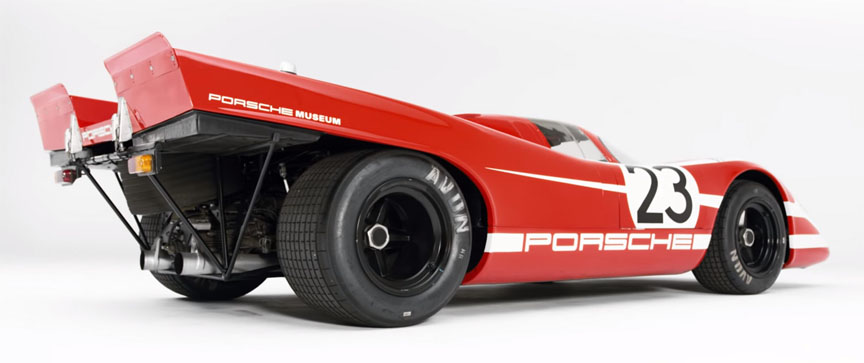
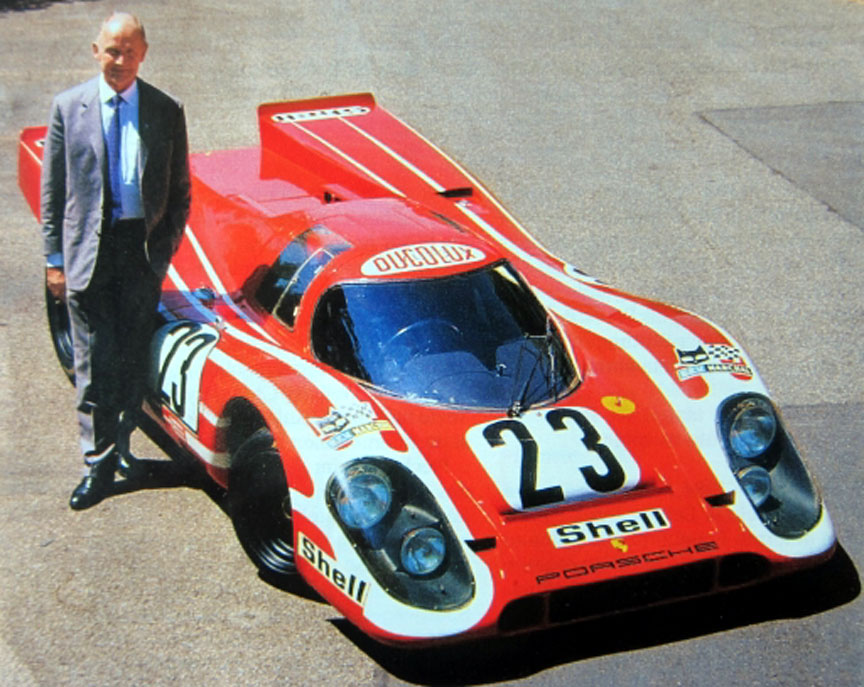
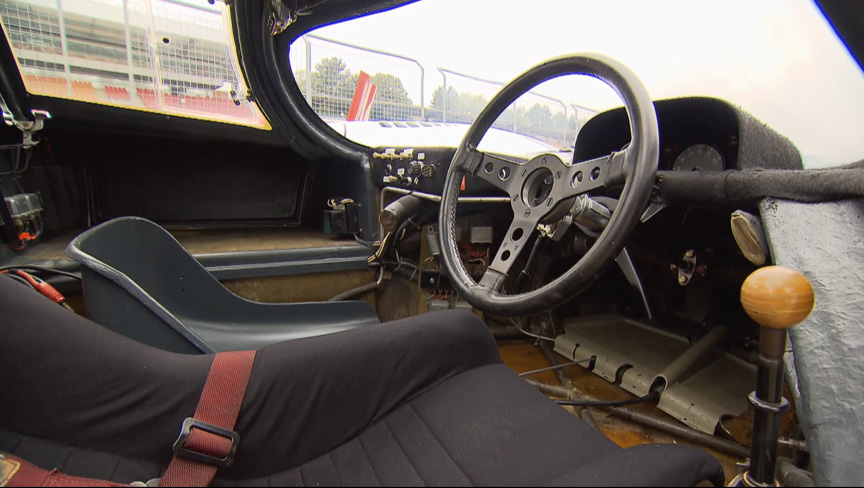
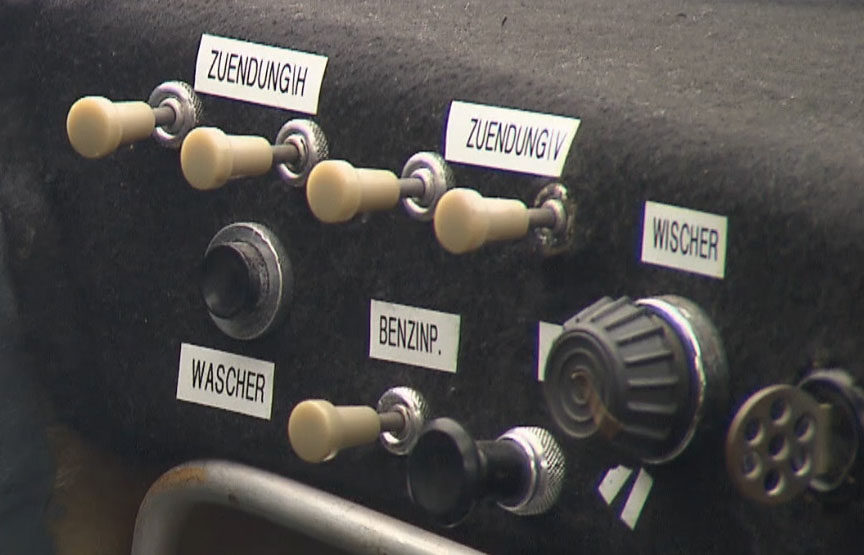
Racing 1971
For the 1971 Season, Porsche faced some new competition including Roger Penske’s 600 bhp 512S and the Alfa Romeo T33/3. To prepare, Porsche revised both the short and long versions of the 917. Both had slight body changes that included vertical fins on the K and LH was changed to reach speeds up to 248 mph. Porsche also prepared the famous 917/20 ‘Pink Pig of Zuffenhausen’. One of the most radical developments for 1971 was a single magnesium frame that was fitted to chassis 053 and raced by JWA/Martini. Painted white, this car placed first overall at Le Mans. It was driven by Helmut Marko and Gijs van Lennep to set an overall distance record. Learn more about the 1971 Porsche 917 here.


